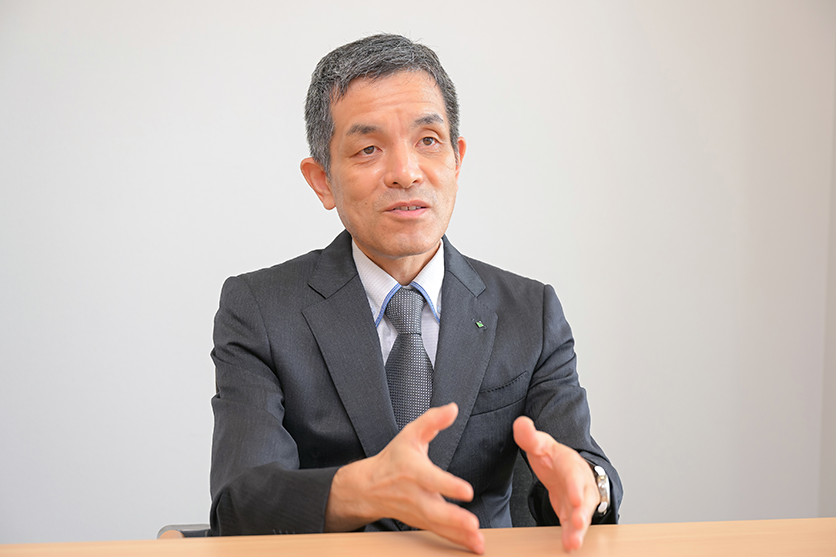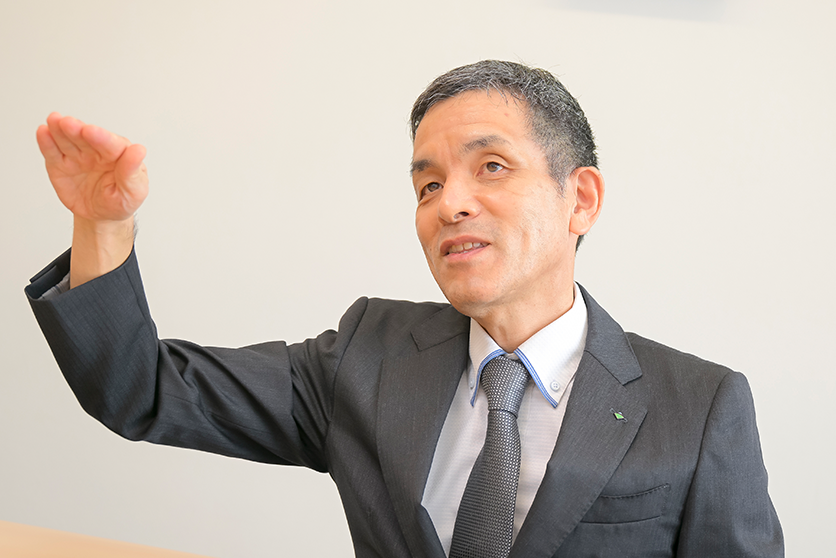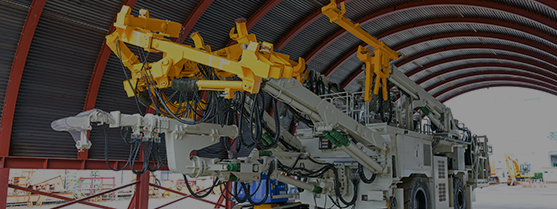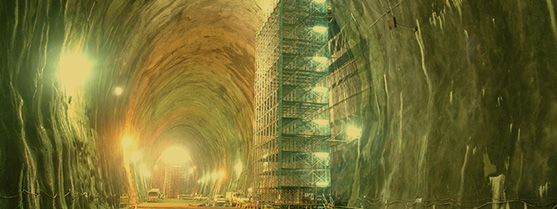
Tunnel Construction Professionals
Robotics Production Division

General Manager, 1st Production Engineering Department, Robotics Production DivisionHiroyuki MORINO
“Robotics technology is creating a new era in tunneling”
Flexible development of ideas for all types of construction
The Robotics Production Division was renamed from the department name Machinery Department in 2019. Automation and remote technologies are also advancing, and we are now in an era in which “robotics” must be further developed to include not only the machines themselves, but also the areas of information processing technology such as AI and high-speed, high-capacity communication technology. My department is responsible for the development of robotics technology for use in tunneling.
There are two main types of tunnels: tunnels in mountain area and shield tunnels in urban area. In mountain tunnels where explosives are used to excavate hard rock, machines are used to drill holes for the dynamite and to carry the excavated muck out of the tunnel. As construction work is carried out in unstable areas where the ground is exposed, techniques are required to create a safer environment.
Shield tunnels are excavated with people inside shield machines or structures called segments, so there is no danger of rocks or soil mass falling on people, as is the case with tunnels in mountain areas. However, there is a risk of being caught in the machine or falling from the machine. In addition, the rear part of the shield machine is a series of various equipment stretching up to 100m. From the preparatory stage, "which shield machine is to be used in combination with which equipment" must be properly selected.
However, in the basic operations of constructing tunnels and other structures, such as excavating, transporting, lifting, lowering, connecting and cutting, what needs to be done is the same whether it is a tunnel in mountain area or a shield tunnel. Technologies that have been used only in shield tunnels may be useful in the construction of tunnels in mountain area. And vice versa, technology used in mountain area tunnels can be used in shield tunnels. For this reason, the engineering department does not dare to separate the teams for tunnels in mountain area and shield tunnels, so that ideas can come from across the board.

East Japan/West Japan Robotics Center is a strong presence
Apart from the Robotics Production Division, Obayashi also operates the East Japan Robotics Center (Saitama Prefecture) and the West Japan Robotics Center (Osaka Prefecture). Robotics centers are places where machines are maintained and managed, and where technology is developed and tested. The ability to thoroughly pursue development at our own sites is a strength unique to Obayashi. The advantage is that we can act quickly, as there is no need to rent a place.
The Robotics Production Division works closely with the Robotics Center and often experiments with technologies in the development stage at the Robotics Center. In the future, we would like to launch more "Obayashi original" robotics to expand our business possibilities.
A sense of achievement, “moving step by step towards a goal”
We are very happy when the technology we proposed is completed. If things don't go well, we try to reflect on the situation and make the most of it next time. One of the most impressive recent technological developments is the Quick Telector, which is used to erect steel support in mountain area tunnels. We created our own original concept and worked with the manufacturer to design the equipment and controls. Technology development takes around two years from conception. It is a long road, and it is rewarding to move step by step towards the final goal.
The Robotics Production Division is also responsible for sales support as well as technical development. This involves estimating construction work and making proposals for the selection of machinery. It is a different job from technical development, but it is the same in that it supports the field. Tunnel construction offers many opportunities for us mechanical and electrical engineers to play an active role, and the scale of each site is large, so we feel a sense of achievement when we can contribute to orders received.

Aiming to attract new human resources by improving safety and productivity
To increase the number of young people who want to work in tunnels, we believe it is essential to improve safety in the site by introducing robotics to keep people away from dangerous work.
For example, it is safer if you can operate machinery on site by remote control from your own home, without having to go into the tunnel. Yet you will still enjoy working in a game-like environment. Advances in such technology will also increase efficiency and save manpower, as multiple machines can be run simultaneously. To create an era of safe working conditions, we are involved in daily development with the aim of moving away from the image of “physical labor” as it has been in the past.
Personnel with good knowledge of telecommunications and AI will also be in even greater demand in the future. However, simply being familiar with the technology is not enough to work in the Robotics Production Division. At the heart of our work is to support construction sites. It is always important to co-operate with the various people involved in construction and to have an attitude of listening to everyone's voice.


